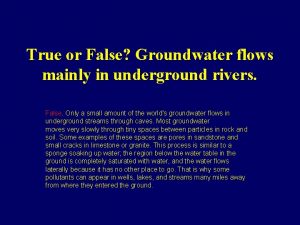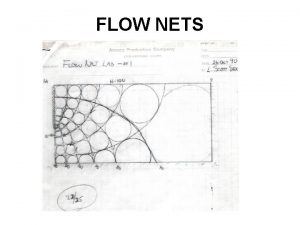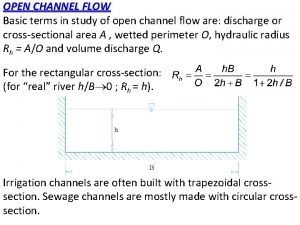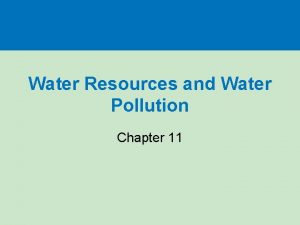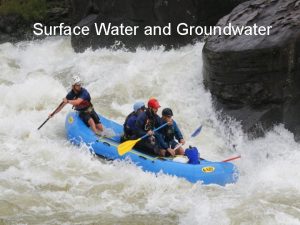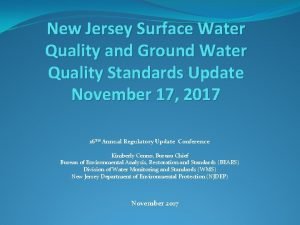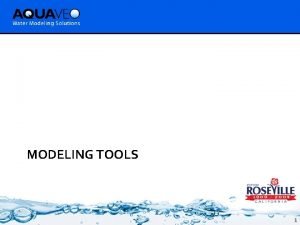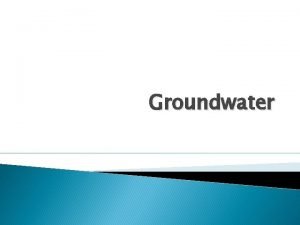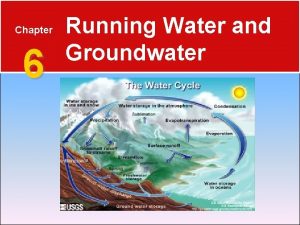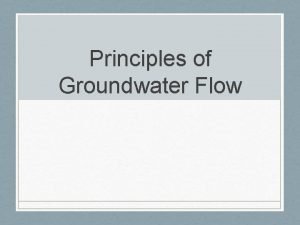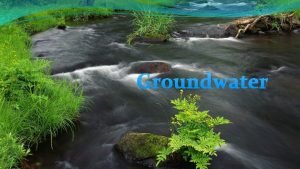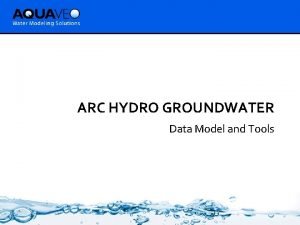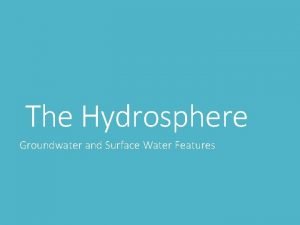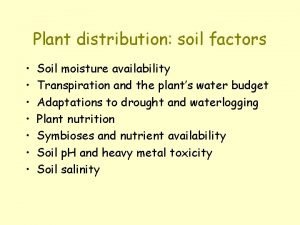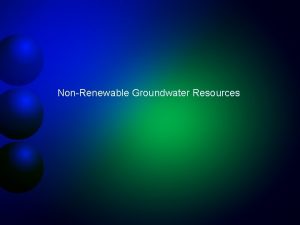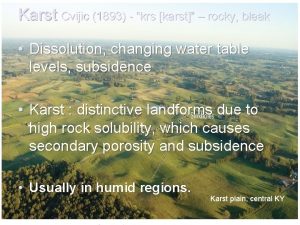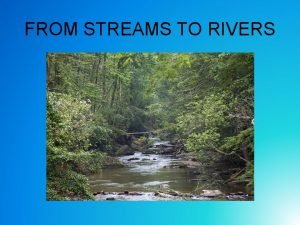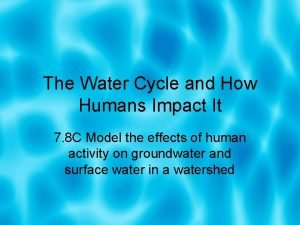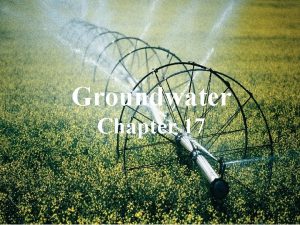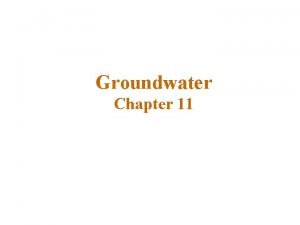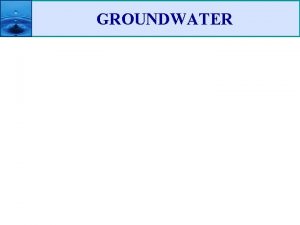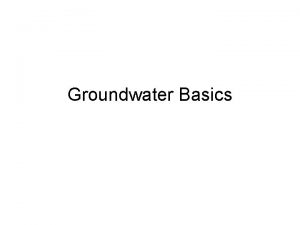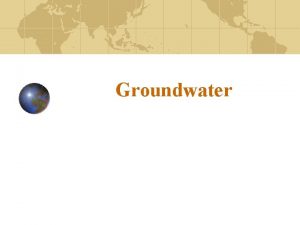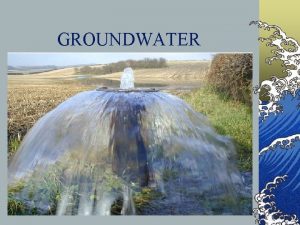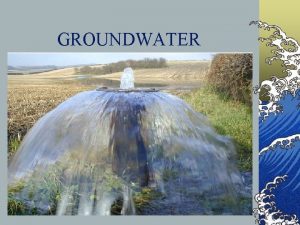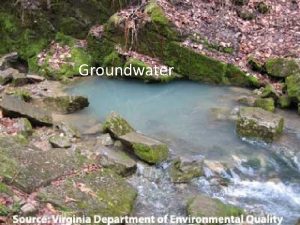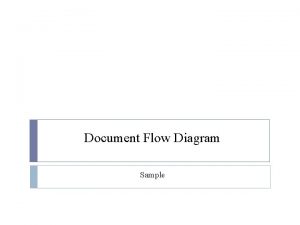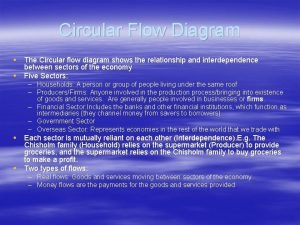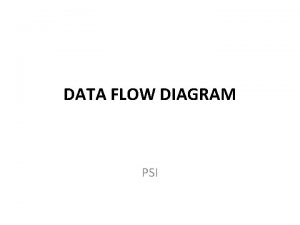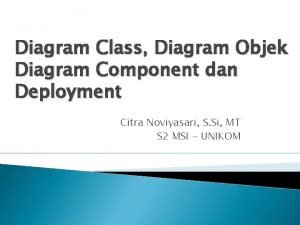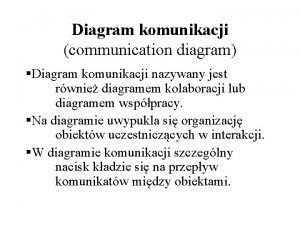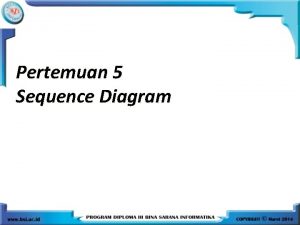Regional Groundwater Flow I Introduction A Diagram the


























- Slides: 26

Regional Groundwater Flow

I. Introduction A. Diagram “ the water table is a subdued replica of the surface topography”


II. Groundwater Flow Patterns

II. Groundwater Flow Patterns GW Divide

II. Groundwater Flow Patterns GW Divide Hinge Line

II. Groundwater Flow Patterns Discharge Zone Recharge Zone GW Divide Hinge Line Discharge Zone

III. Piezometer Patterns

IV. Effects of Topography Toth systems of flow local intermediate regional

IV. Effects of Topography

IV. Effects of Topography

V. Flow System Mapping (recharge and discharge zones)

V. Flow System Mapping (recharge and discharge zones) A. Topography

V. Flow System Mapping (recharge and discharge zones) A. B. Topography Piezometer Trends

V. Flow System Mapping (recharge and discharge zones) A. B. C. Topography Piezometer Trends Hydrochemical Trends

V. Flow System Mapping (recharge and discharge zones) A. B. C. D. Topography Piezometer Trends Hydrochemical Trends Environmental Isotopes

V. Flow System Mapping (recharge and discharge zones) A. B. C. D. E. Topography Piezometer Trends Hydrochemical Trends Environmental Isotopes Soil, Vegetation and Land Surface Features

VI. Salt Water Encroachment A. The problem

VI. Salt Water Encroachment B. Possible Solutions 1. modification of pumping pattern

VI. Salt Water Encroachment B. Possible Solutions 2. artificial recharge

3. pumping troughs

4. freshwater ridge (injection barrier)

5. subsurface barrier

VI. Salt Water Encroachment B. Possible Solutions 1. modification of pumping pattern 2. artificial recharge 3. pumping troughs 4. freshwater ridge (injection barrier) 5. subsurface barrier

VI. Salt Water Encroachment C. Predicting the Intrusion Ghyben-Herzberg Principle z(x, y) = ρw * h(x, y) ρs - ρw

VI. Salt Water Encroachment C. Predicting the Intrusion Ghyben-Herzberg Principle z(x, y) = ρw * h(x, y) ρs - ρw If ρs = 1. 025; ρw = 1. 000 then z(x, y) = 40 h(x, y)
 True or false: groundwater can flow.
True or false: groundwater can flow. Groundwater flow net
Groundwater flow net Groundwater flow definition
Groundwater flow definition Cheddar cheese production flow chart
Cheddar cheese production flow chart Sources of groundwater pollution
Sources of groundwater pollution We can reduce water pollution
We can reduce water pollution Running water and groundwater
Running water and groundwater Njdep gwqs
Njdep gwqs Gms groundwater
Gms groundwater Groundwater assessment methodology
Groundwater assessment methodology Water table
Water table Septic tank contamination groundwater
Septic tank contamination groundwater A tiny groove in soil made by flowing water
A tiny groove in soil made by flowing water Chapter 6 running water and groundwater
Chapter 6 running water and groundwater Water cycle brain pop
Water cycle brain pop Rajiv gandhi groundwater raipur
Rajiv gandhi groundwater raipur Total hydraulic head
Total hydraulic head Groundwater porosity
Groundwater porosity Arc hydro groundwater
Arc hydro groundwater On the surface of water
On the surface of water Groundwater table
Groundwater table Is groundwater a renewable or nonrenewable resource
Is groundwater a renewable or nonrenewable resource Groundwater table
Groundwater table How does groundwater rejoin the water cycle
How does groundwater rejoin the water cycle Human impact on groundwater
Human impact on groundwater Groundwater
Groundwater Groundwater system
Groundwater system
